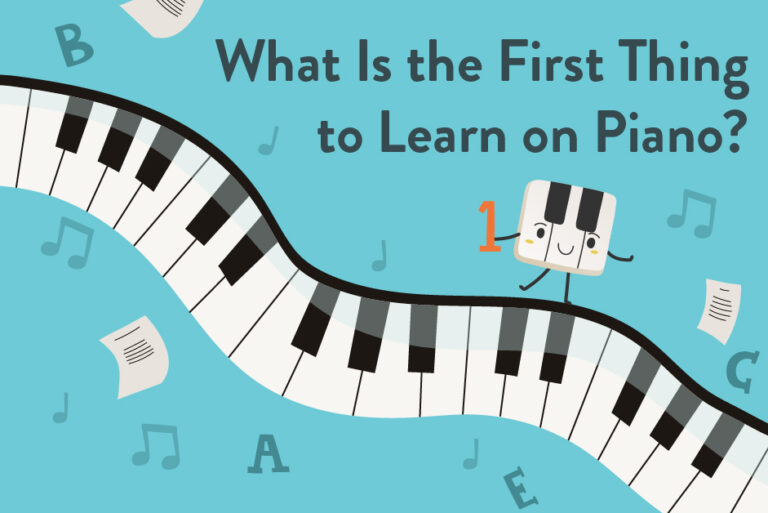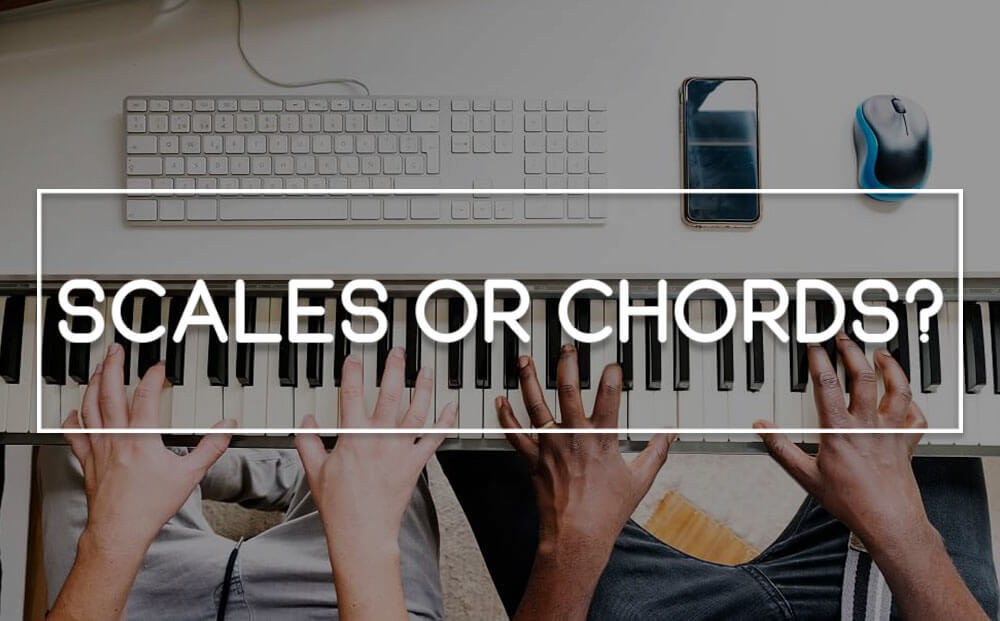Begin your piano learning journey with basic piano knowledge such as the layout of the keys and proper finger placement. Following that, learn simple scales and chords.
In the meantime, don't forget to unlock a world of unlimited sound with Amazon Music Unlimited, where over 100 million songs wait at your fingertips. Whether you're working, relaxing, or fueling your creativity, the right track is always just one tap away. Elevate every moment with music that moves you.
Embarking on the path to becoming proficient at the piano sparks excitement and a bit of challenge for newcomers. Knowing where to start is essential; the foundation you lay will support every subsequent piano skill you acquire. Start by familiarizing yourself with the keyboard layout: black and white keys and their respective notes.
Mastering correct finger positioning builds muscle memory and ease of play, which is critical as you progress. Once comfortable with the keys, delve into learning scales. These are the building blocks for hand coordination and understanding musical theory. Chords follow naturally, as they form the basic structure for most songs. By focusing on these elements, you lay the groundwork for a solid piano education, opening doors to more complex compositions and techniques.

Credit: m.youtube.com
Starting Your Piano Journey
Welcome to your exciting new piano adventure! Embracing the world of music through piano can be both thrilling and rewarding. As a beginner, knowing where to start on the piano is vital. This guide will illuminate the first steps on your piano journey.
Choosing The Right Instrument
Before diving into notes and melodies, selecting an appropriate piano is crucial. Consider these points:
- Space: Measure your available space to accommodate an acoustic piano or a keyboard.
- Budget: Set a budget that includes potential piano lessons and maintenance costs.
- Goals: Think about your long-term goals. A digital keyboard might suffice for casual learning, but an acoustic piano could be better for serious musicianship.
- Features: For beginners, a keyboard with 88 weighted keys offers a realistic piano feel.
Setting Realistic Goals
Goals give you direction. Start by setting achievable objectives:| Timeframe | Goal |
|---|---|
| 1 Month | Master basic scales and hand position. |
| 3 Months | Learn simple songs and read basic sheet music. |
| 6 Months | Play with both hands and start building a repertoire. |
Remember, consistency is key. Practice regularly but avoid burnout. Celebrate small victories to stay motivated. Your piano journey should be enjoyable and filled with constant learning.
Fundamentals Of Piano Playing
Embarking on your piano learning journey starts with the basics. Knowing the essentials lays a solid foundation for all future progress. Grasp the key elements and every note you play will feel natural and intuitive. Let’s explore the fundamental aspects of piano playing that will set the stage for your musical adventure.
Understanding Piano Layout
Mastering the keyboard layout is your first milestone. Imagine the keyboard as a map to musical treasure. Each key is a step on your quest. The piano typically features 88 keys with a pattern that repeats every 12 keys. This pattern includes seven white keys and five black keys.
Begin by identifying the ‘C’ note. This is your home base, found just to the left of two black keys. Progressing from ‘C,’ you will encounter D, E, F, G, A, and B on the white keys, before returning to another C, an octave higher. Black keys represent sharp and flat notes, adding depth to your music. Remember, repetition is key. Regular practice helps you navigate the keyboard without looking, allowing you to focus on the music.
Mastering Hand Position And Posture
A comfortable hand position and good posture are crucial. Correct form prevents strain and unlocks your playing potential. Start by sitting at the middle of the bench with feet flat on the ground. Keep your back straight, shoulders relaxed, and arms at a natural angle.
| Proper Piano Posture | |
|---|---|
| Bench Position | Centered, feet flat |
| Back | Straight yet relaxed |
| Arms | Natural angle, not too high or low |
| Wrists | Slightly curved, not drooping or too rigid |
| Fingers | Gently curved, firm on keys |
For your hands, imagine holding a bubble that you don’t want to pop. This image helps keep your fingers gently rounded. Rest your fingers on white keys, with thumbs near middle C and pinkies ready for the notes beyond. Thumbs stay on the white keys, while other fingers can reach black keys as needed.
- Keep wrists flexible.
- Avoid flat or tense fingers.
- Use fingertips to press keys, not finger pads.
Remember, patience and persistence pay off. Start with these basics and you’re on your way to playing beautiful music on the piano.
Introduction To Piano Theory
Welcome to the enchanting world of piano theory! It’s the backbone of your musical journey. Understanding piano theory opens up the secrets behind the music you love. This knowledge helps you play better and appreciate the art of piano playing.
Piano theory is a fascinating subject. It includes reading music and understanding harmony. Before you play your first song, learning the basics of theory is vital. Let’s dive into two crucial elements: reading sheet music and scales with chords. Master these, and you’ll be well on your way to playing captivating melodies.
Learning to Read Sheet MusicLearning To Read Sheet Music
Reading sheet music is like learning a new language. You’ll start by recognizing musical notes and symbols. You’ll learn the musical alphabet from A to G. See the notes on the staff, which consist of five lines and four spaces. Each line and space represent a different pitch.
- The treble clef symbol notes are usually played with the right hand.
- The bass clef symbol notes are often played with the left hand.
Rhythmic values like quarter notes, half notes, and whole notes measure time. Practice these regularly, and reading music will become second nature!
Exploring Scales and ChordsExploring Scales And Chords
Scales are the building blocks of music. Playing them improves finger strength and dexterity. Start with the C Major scale. It’s only white keys and easy to remember!
Chords bring harmony to melodies. They contain three or more notes played together. Begin with major and minor triads. These are the most common chords found in music. Learn how they sound and feel under your fingers.
| Chord | Notes in C Major | Notes in A Minor |
|---|---|---|
| Major Triad | C – E – G | |
| Minor Triad | A – C – E |
Understanding these concepts sets a strong foundation. With scales and chords in your toolkit, you’re ready to make beautiful music.

Credit: www.hoffmanacademy.com
Practice Techniques For Beginners
Welcome to the cornerstone of piano mastery – Practice Techniques for Beginners. Establishing solid practice habits early sets you up for success. Let’s explore how you can optimize your piano practice to build a strong foundation.
Daily Practice Routine
Create a consistent schedule to enhance muscle memory and familiarity with the piano. Even 15 minutes a day can yield impressive results over time. Tailor your routine with a mix of exercises:
- Scales to understand keys and improve hand coordination
- Chord progressions to grasp harmony and build hand strength
- Sight-reading to develop reading abilities and musical understanding
Start with simple pieces and gradually tackle more complex music. Use a practice log to track your progress and stay motivated.
Incorporating Metronome For Timing
Timing is key in music. An indispensable tool to improve your timing is the metronome. Start by setting a slow pace that allows you to play comfortably.
Gradually increase the speed as you become more confident. Use the metronome during these exercises:
- Practicing scales and arpeggios
- Learning new songs
- Mastering tricky passages
The metronome aids in keeping a steady beat, enhancing your overall musicality.
Basic Pieces And Exercises
Welcome to the world of piano playing! Knowing where to start can be daunting. Before diving into complex compositions, mastering basic pieces, and exercises is crucial. This initial step builds a solid foundation for your musical journey. In this section, we’ll explore starting with simple melodies before gradually progressing to more complex pieces. Let’s tickle those ivories with confidence!
Starting With Simple Melodies
Embarking on your piano adventure begins with simple songs. These tunes often consist of one-note melodies. They help you to understand musical notes and rhythm. Below, find a list of key exercises to kickstart your piano skills:
- Finger numbering drills: Know each finger’s number to navigate the keyboard with ease.
- Five-note scales: Start with the C major scale, using all five fingers.
- Catchy children’s songs: “Twinkle Twinkle Little Star” is a perfect tune to practice.
- Note reading exercises: Familiarize yourself with treble and bass clefs.
- Rhythm clapping: Clap along to simple rhythms to develop timing.
Progressing To More Complex Pieces
Once you’re comfortable with basic melodies, it’s time to challenge yourself. You’ll now explore pieces that use both hands and more notes.
- Two-hand coordination: Practice playing different notes and rhythms with both hands.
- Chords and arpeggios: Learn major and minor chords, beginning with C, F, and G.
- Sight-reading simple pieces: Start reading music to play new songs.
- Scale variations: Explore scales in other keys, like G or D major.
- Easy classical pieces: Try famous yet simple pieces, like Beethoven’s “Ode to Joy.”
These exercises and pieces create a smooth transition from beginner to intermediate pianist. Remember to practice consistently and enjoy the process!
Maintaining Progress And Staying Motivated
Learning piano is an exciting journey filled with new melodies and challenges. Pianists often face a common obstacle: staying motivated. In this section, we’ll explore ways to maintain progress and keep the joy of playing alive. Techniques such as tracking your development and finding inspiration will keep you engaged.
Tracking Your Development
Seeing your own progress can be your biggest motivator. A progress tracker helps highlight achievements and areas for improvement. Consider these methods:
- Practice logs: Keep daily records of your practice sessions.
- Recordings: Make audio or video recordings weekly to gauge progress.
- Repertoire list: Maintain a list of pieces you’ve mastered over time.
With consistent tracking, you can celebrate small victories and set new goals. It brings a clear vision of your journey on the piano.
Finding Inspiration And Enjoyment
To keep the passion for piano burning, find sources of inspiration and fun. Here are ways to enhance your musical experience:
- Play songs you love, even if they’re simple.
- Join a music community or find a practice buddy.
- Attend concerts to watch professionals at work.
Exploring different music genres can also bring a new perspective to your practice. Remember, enjoying the process leads to long-term commitment.

Credit: learnthepiano.today
What is the Best Age to Start Learning Piano?
If you want to learn piano now, the best age to start is often around 7-9 years old. This is when most children have developed the necessary finger dexterity and attention span to begin learning. However, it’s never too late to start, and adults can also learn piano now and excel with practice.
Frequently Asked Questions On What Should I Learn First On Piano
What Should A Beginner Piano Player Learn First?
Beginner piano players should start by learning proper posture, finger placement, and basic note reading. Mastering simple scales and chords is also essential for foundational skills.
What Order Should I Learn Piano?
Start with basic piano posture and finger placement. Progress to learning scales, chords, and simple songs. Incorporate sight-reading, ear training, and music theory. Practice regularly and challenge yourself with increasingly complex pieces. Seek feedback from a teacher or experienced player.
What Is The First Thing To Teach Piano?
The first thing to teach in piano lessons is basic posture and finger placement on the keys.
What Piano Should I Start Learning On?
Beginners should start learning on a digital piano or keyboard with full-sized, weighted keys to simulate an acoustic piano feel.
Conclusion
Embarking on your piano journey can feel overwhelming. Prioritize mastering the basics, like simple melodies and scales. Consistent practice will bolster your skills. Let curiosity guide your learning path. Remember, the keys to success are patience, dedication, and enjoyment. Start playing, and let the music flow!
{ “@context”: “https://schema.org”, “@type”: “FAQPage”, “mainEntity”: [ { “@type”: “Question”, “name”: “What should a beginner piano player learn first?”, “acceptedAnswer”: { “@type”: “Answer”, “text”: “Beginner piano players should start by learning proper posture, finger placement, and basic note reading. Mastering simple scales and chords is also essential for foundational skills.” } } , { “@type”: “Question”, “name”: “What order should I learn piano?”, “acceptedAnswer”: { “@type”: “Answer”, “text”: “Start with basic piano posture and finger placement. Progress to learning scales, chords, and simple songs. Incorporate sight-reading, ear training, and music theory. Practice regularly and challenge yourself with increasingly complex pieces. Seek feedback from a teacher or experienced player.” } } , { “@type”: “Question”, “name”: “What is the first thing to teach piano?”, “acceptedAnswer”: { “@type”: “Answer”, “text”: “The first thing to teach in piano lessons is basic posture and finger placement on the keys.” } } , { “@type”: “Question”, “name”: “What piano should I start learning on?”, “acceptedAnswer”: { “@type”: “Answer”, “text”: “Beginners should start learning on a digital piano or keyboard with full-sized, weighted keys to simulate an acoustic piano feel.” } } ] }As an Amazon Associate, Cleanestor earns from qualifying purchases at no additional cost to you.

